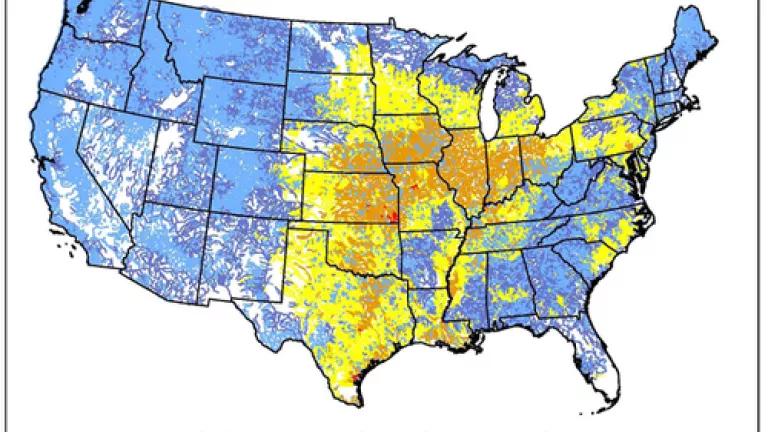Department of Interior Finds Atrazine and Other Pesticides Is Causing Local Frog Extinctions

On Wednesday, the U.S. Fish and Wildlife Service announced that it would not protect the northern leopard frog under the Endangered Species Act. Hidden in that announcement was the admission, however, that pesticides (particularly atrazine) "has likely contributed to northern leopard frog population extirpations throughout their range."
Here are some of the specific findings by the U.S. Fish and Wildlife Service:
While northern leopard frogs may be exposed to pesticides in a number of ways, they are most significantly exposed to pesticides when run-off from agricultural and urban areas reaches occupied habitats. Exposure to pesticide run-off can influence parasitic community structure and seasonal recruitment in northern leopard frogs (King et al. 2008, p. 20). Berrill et al. (1997, p. 243) found that tadpoles (including northern leopard frog tadpoles) are extremely sensitive (i.e., they experience analysis and death) to exposure of one pesticide at a time; pesticides in combination likely have more severe effects. Ouellet p. 97) examined northern leopard frogs in agricultural and non-agricultural ponds in Quebec and found that rogs in the agricultural ponds had a variety of hind limb malformations. The authors identified agricultural pesticides as a potential causal agent. Pesticide exposure not only can cause malformations in frogs (Lannoo 2008, pp. 142–144), but contact with pesticides has been found to increase amphibians vulnerability to Ribeiroia (trematode) and other parasitic infections, which are also known to cause frog malformations (Kiesecker 2002, p. 9903; Lannoo 2008; Rohr et al. 2008, p. 1237). In addition, increased nitrates from fertilizers can also result in adverse effects to amphibian development and survival (Marco et al. 1999, p. 2837; Rouse 800–802).
EPA has repeatedly put off completing a new review of atrazine's environmental effects, which it began nearly three years ago, after reports revealed atrazine spiking to extremely high levels in rivers and streams, particularly in the Midwest. Is this yet another example of the Obama Administration backpedaling on environmental protections? Will the U.S. Fish and Wildlife Service's findings spur them into action?
You can send EPA a message about the importance of phasing out atrazine use in the United States--not just for the frogs, but for us all--here.
